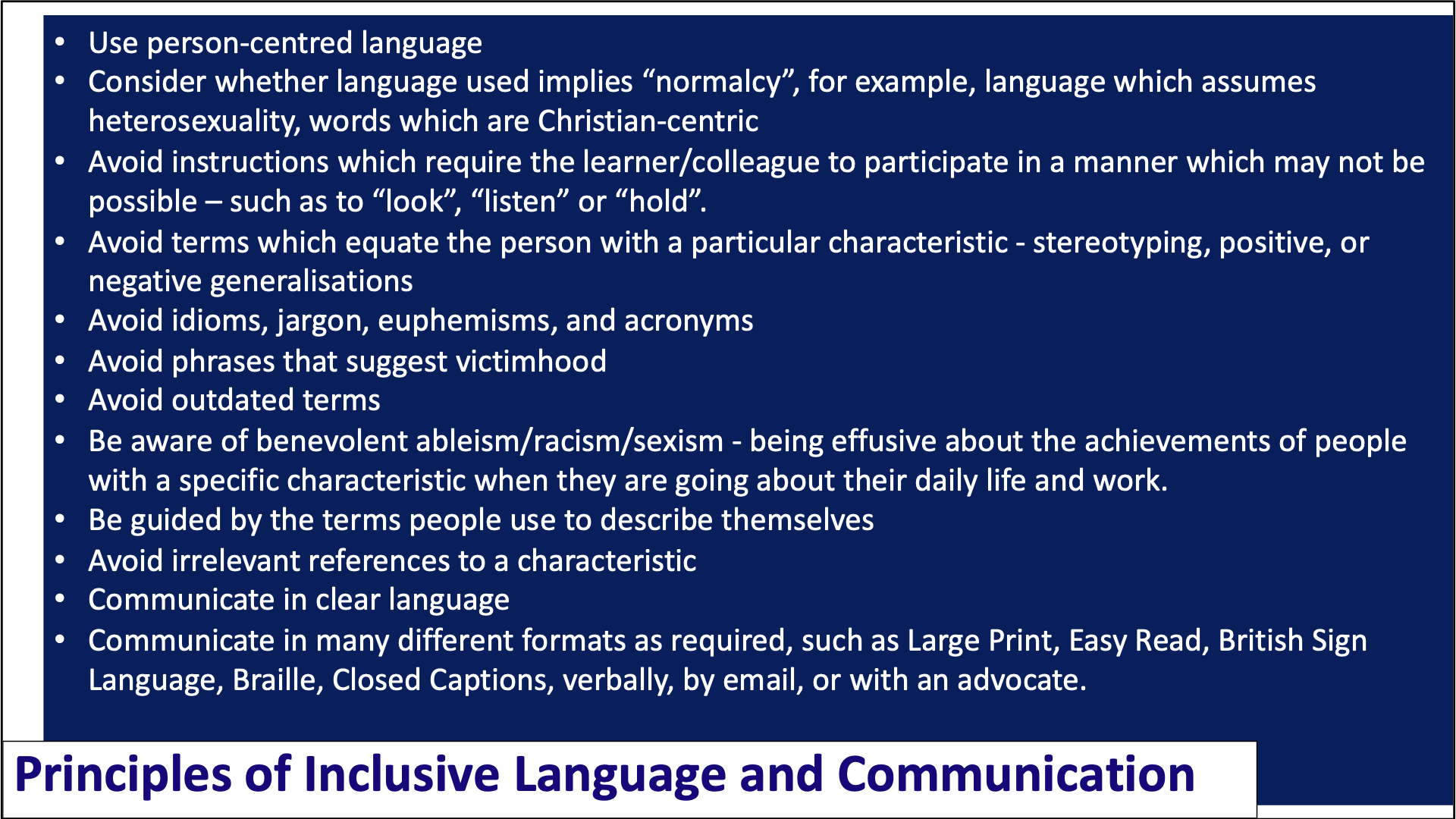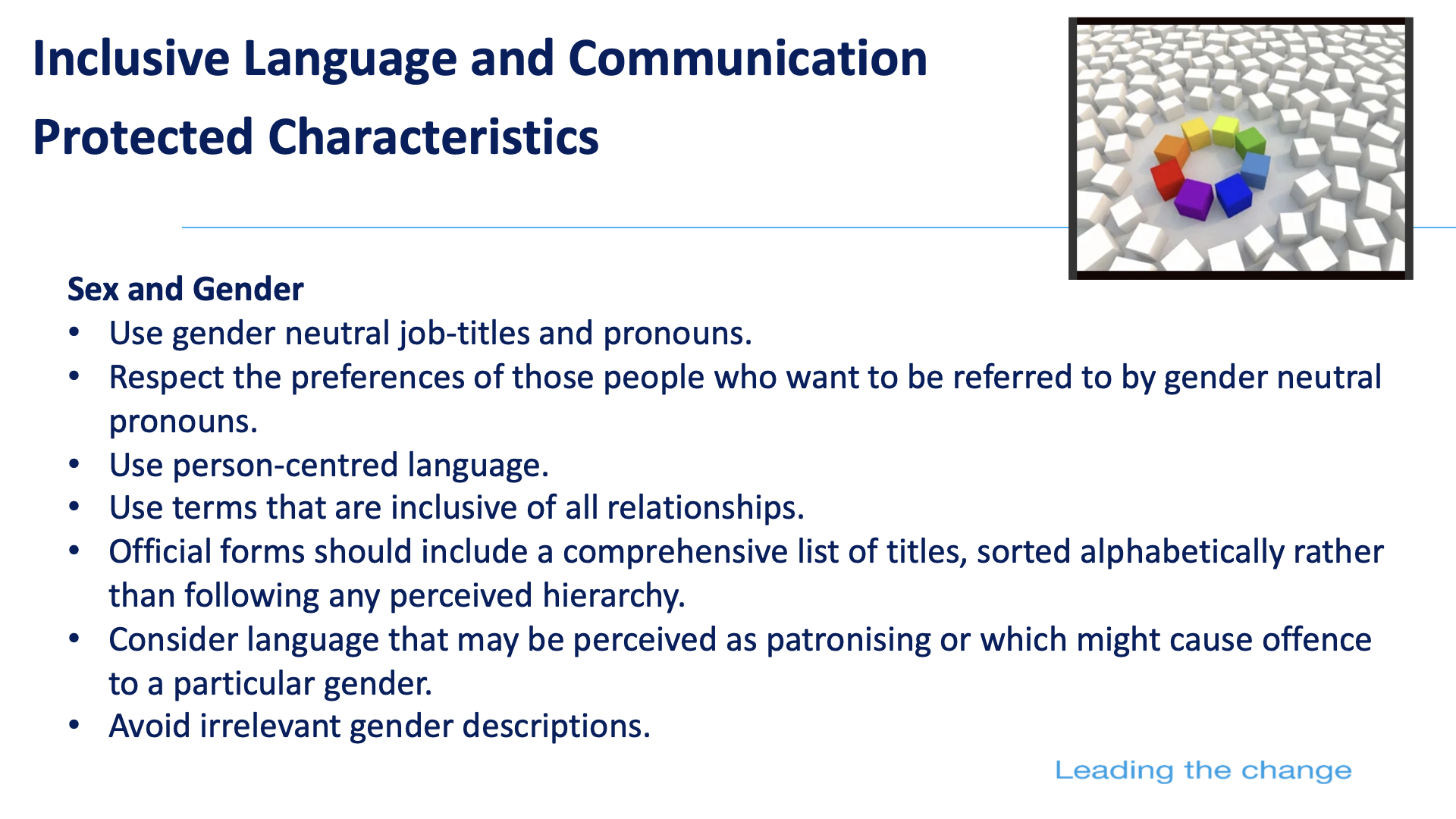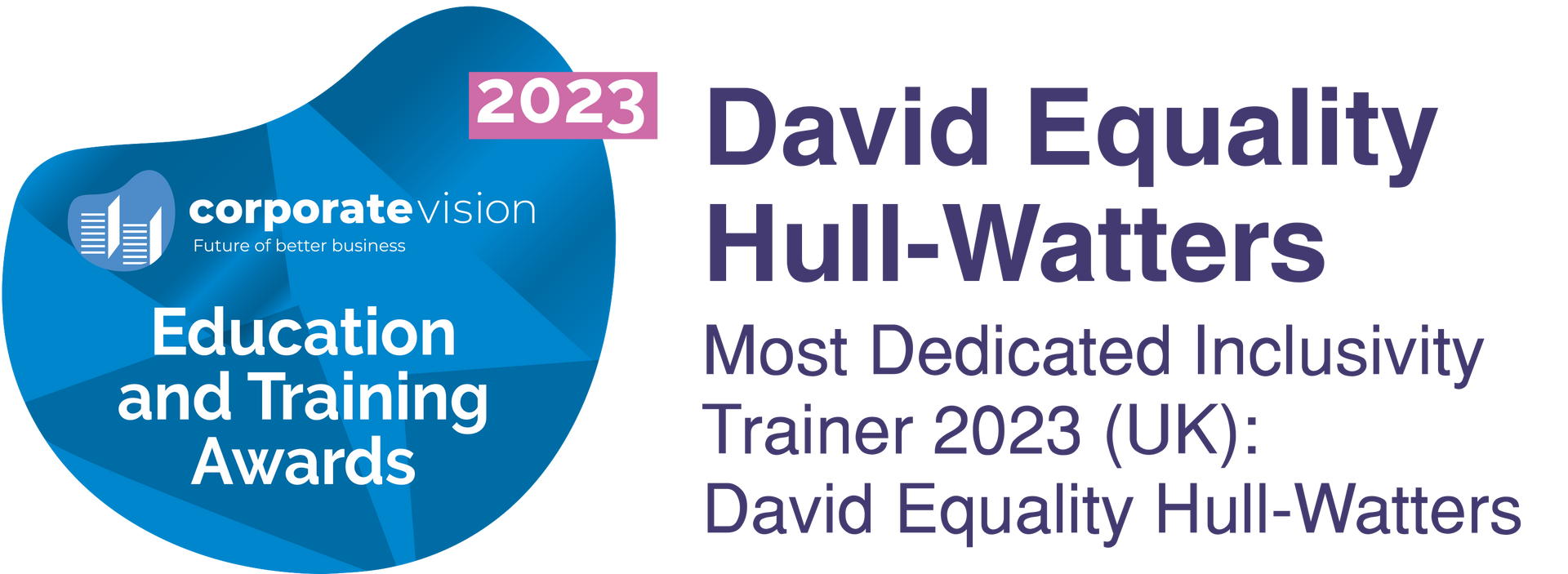Inclusive Language and Communication
Discussions and Activities
Activity One: Celebrating Good Practice
Instructions
- The person whose first name comes first alphabetically will be the leader
2. The leader will decide on a speaker who will feedback to the whole group, when we return to the Main Room. There is no pressure to be the speaker, so please choose another colleague, if you prefer not to take on this role.
3. Your leader will guide you through the questions below.
4. Please make sure that all voices are heard
Team 1 (those in Room 1):
What does the term Inclusive Language mean to each person?
What do our teams and the wider organisation already do well?
What could we do but could do better, for our language to be more inclusive?
Team 2 (those in Room 2):
What does the term Inclusive Communication mean to each person?
What do our teams and the wider organisation already do well?
What could we do but could do better, for our internal and external communication to be more inclusive?
Consider role specific:
· Methods of communication
· Audience
· Areas of strength
· Areas to enhance

Activity Two: Confidential Paired Discussion
Discuss with your partner:
Have you heard people using language that excludes or offends you or another person?
How did it make you feel?
What was done, or should have been done?
What was the outcome?
Note: This can be within a work or social situation

Activity Three: Instead of This - Collaborative Activity
Instructions
Add alternative inclusive words/phrases.
Reflect upon how these examples relate to the Principles of Inclusive Language below.
1.The person born in the earliest month of the year will be the leader. They will read through given words/phrases and ask the team to suggest alternatives.
2. Consider the concepts and thinking behind each suggested answer.
3. Please make sure that all voices are heard


Activity Four: Receptive/Expressive Communication Activity
Instructions
- The person whose name is last alphabetically will be the leader of this activity.
2. Your leader will decide who will be Speaker A and who will be Speaker B.
3. Your leader will guide you through each part of the activity below:
PART ONE
In a moment, SPEAKER A is going to talk for one minute about their weekend and SPEAKER B is just going to listen.
OK – off you go [1 minute].
And stop!
How did that feel? Easy? Good!
PART TWO
Now, SPEAKER B is going to talk about their weekend for one minute. BUT they are not allowed to use any words containing the letter ‘e’.
Ready? Off you go! [1 minute].
And stop!
How did that feel?
Were you able to speak as fluently as your partner?
How did that make you feel?
SPEAKER A - how did it feel listening as your partner was struggling to put their thoughts into words? Frustrating? Annoying?
Discuss:
What was the purpose of this exercise?
How might it relate to your role?

Activity Five: Inclusive Communication Audit
This reflective activity is designed as a strategy to prepare for Action Planning at the end of the session.
Objectives:
Audit the inclusivity of language and communication within your Team and the wider organisation to celebrate good practice and highlight areas for improvement.
Consider role specific:
· Methods of communication
· Audience
· Areas of strength
· Areas to enhance
Open Discussion:
Where might my Team and the organisation benefit from developing an awareness of specific language and terminology?
Why might this be important (to yourself, the organisation, the wider community)?

Additional Activity: Instead of This - Collaborative Activity
Instructions
- The person who lives furthest from their city of birth will be the leader
2. The leader will decide on a speaker who will feedback to the whole group, when we return to the Main Room. There is no pressure to be the speaker, so please choose another colleague, if you prefer not to take on this role.
3. Please make sure that all voices are heard
Designated characteristic for each room:
Room 1: Disability
Room 2: Sex and Gender
Room 3: Race, Ethnicity and Nationality
Specific Protected Characteristic guidance is below each table.
Room 1: Disability


Room 2: Sex and Gender


Room 3:
Race, Ethnicity and Nationality


Additional Activity: Micro-aggressions
Let’s explore the hidden messages within a selection of Protected Characteristics Case Studies and consider the impact of Micro-behaviours.
Instructions
- The person who was born in the latest month of the year will be the leader
2. Leader, guide your team through a discussion about the hidden messages and impact of the 3 Micro-aggression examples below.
3. Please make sure that all voices are heard
A speaker isn't needed for this activity.

Additional Activity - Micro-aggressions Discussion
Instructions
Leader, facilitate an open discussion on the questions below.
This activity is completely confidential and won't be shared on our return to the Main Room.
Share examples of micro aggressions that you have experienced or witnessed.
Discuss the impact on those involved.
And explore any action that was or should have been taken.

















